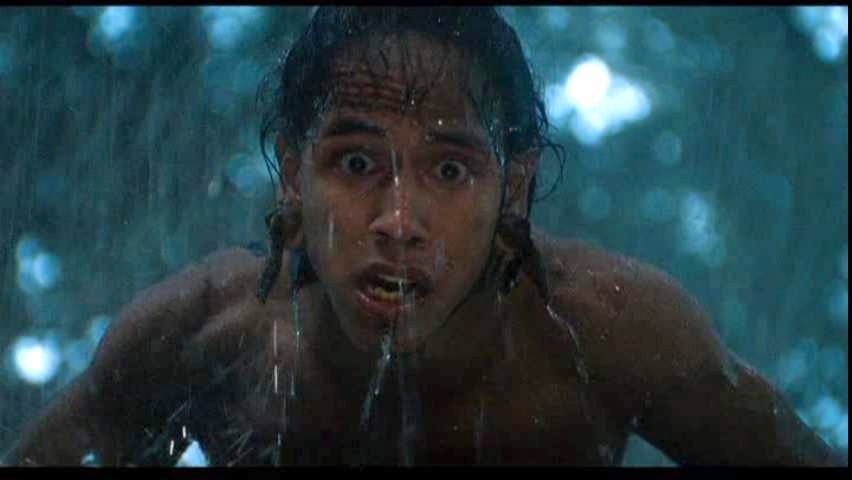Case Study: Shooting Outdoors in the Rain
Name: Dean Semler, Academy Award–winning cinematographer for Dances with Wolves (1990), 2012 (2009), Secretariat (2010), and over 70 other films
Situation: For one scene in Apocalypto (2009), director Mel Gibson envisioned driving rain and a muscular camera move. How could we do all that and light the rain so that the camera could see it?

A man runs out of the jungle toward the beach. The camera starts on his face, moves with him while he is running, and ends up over his shoulder as he sees ships approaching on the ocean. While it is raining.
In trying to get this shot, we had two problems to solve. The first was the camera move, which we accomplished by putting a remote-control camera on a long crane arm. The crane traveled with the actor as he ran, then swung around over his shoulder at the end of the shot. It was a complicated move, and hard to hold focus all the way through, but we rehearsed and knew we could pull it off.
The bigger problem was the rain. If you try to photograph rain with front light, you can’t see it—the rain just disappears into the background. Therefore, rain must always be backlit. Yet for this shot, in which the camera was swiveling 180 degrees, how could we backlight the rain everywhere?
We came up with an ingenious solution, with some help from Mother Nature and the Pettibone company of Baraga, Michigan—maker of some of the best and biggest forklifts in the world. A rocky cove encircled the beach, and the sun went behind it at mid-afternoon. That meant that nature was giving us the opportunity to control the backlight.
The grip crew got two Pettibone forklifts and outfitted them with 50-foot arms that extended up and over the scene. We put 3500-watt SoftSun lights on the end of each arm and pointed them back toward us so they would backlight the rain. (These lights have a color temperature of 5400 K, emulating sunlight.)
The rain crew turned on the rain machine, and the actor began his run. Our dimmer operator turned on the SoftSuns as the actor ran, so the backlight followed him through the rain. The shot was gorgeous—all 15 seconds of it.
And the ships? We had to shoot those in Cornwall, England. So as the camera swung around the actor’s shoulder, it came to face a black flat. We used a visual effect (compositing, Chapter 13) to put the ships into the scene.
Takeaway: Although you likely won’t have the use of forklifts, huge rain machines, or giant lights for your student film, you’ll certainly have problem shots, and you’ll need to address them with the same level of ingenuity we did. If you cannot compromise on a shot the director must have, which is what happened in this situation, you’ll need to find an inventive solution.